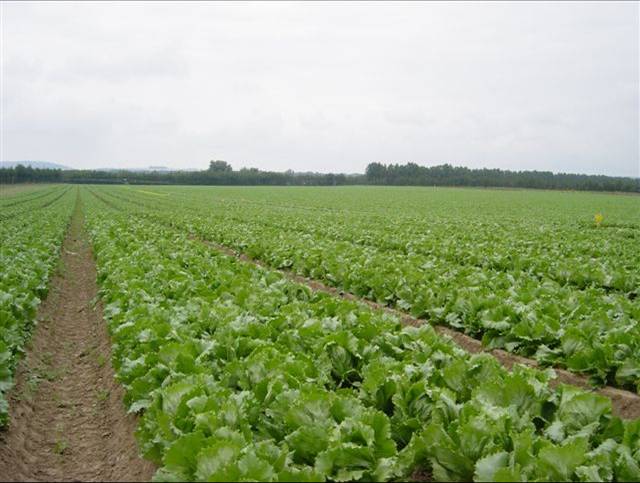
The protectant fungicide Signum has been shown to reduce post-harvest losses in lettuce and improve marketable yields as well as protecting the crop from a number of key diseases including Sclerotinia, Rhizoctonia and Botrytis, says BASF.
"Post-harvest losses in lettuce can be due to a variety of factors; diseases such as Sclerotinia or Botrytis that spoil the produce or other undesirable symptoms such as pinkrib, discoloration or dehydration, leading to unacceptable quality for the retailers. In four trials in Spain, Signum has been proven to reduce the incidence of all these factors and so improve marketable yields," reports Simon Townsend, Product Stewardship Manager for BASF.
He explains that in these trials Iceberg lettuces were harvested and kept in a controlled cool atmosphere for 7 days and then kept at ambient temperature for a further 7 days. "After three days in cool storage the untreated produce had 9% of plants showing pinkrib, whilst the Signum treated produce had just over 5%. After nine days in storage, the incidence of pinkrib in the untreated had risen to over 18% whereas the Signum treated produce had just 8%. In the same trials Signum also reduced discoloration from 10% in the untreated to around 1% in the treated and improved the number of plants affected by water loss from 18% in the untreated to 8% in the treated after 9 days in store."
"Most importantly the marketable yield of lettuce was 152% compared with the standard treatment at 100% which was cyprodinil and fludioxinil," says Simon.
"In further trials in lettuce in Italy. Signum gave excellent control of basal leaf infection caused by Sclerotinia, reducing levels from 26% in the untreated to just 3% fifteen days after treatment. After twenty-one days the Signum treated areas had just 13% infection whilst those treated with cyprodinil and fludioxinil suffered 45% and the untreated had 57% diseased plants. Once again Signum resulted in a significantly higher quality produce and much higher marketable yields."
"Growers have come to expect high levels of disease control from Signum and many have commented on the additional positive effects this product has on quality, yield and shelf-life characteristics. We now have strong field evidence of its positive effects on reducing post-harvest losses which will be very important in a market where quality and visual appeal is key."
"The use of Signum will result in the production of healthier and firmer lettuces with good visual appeal plus a longer shelf life, essential for the ever-demanding retail sector and also for the grower who will enjoy good sales and better returns," concludes Simon Townsend.
Applied from the 1st April to the 31st October, Signum should be applied in the field to lettuce as a protectant application as soon as the young plants have recovered after transplanting at a dose rate of 1.5 kg/ha in water volumes of 200 to 900 litres. For Sclerotinia control, it is particularly important to apply before infection has taken place. As infection in lettuce takes place on petioles and older leaves in contact with the soil, it is better to make the first application of Signum before the outer leaves touch the soil and as early as possible in the spray programme.
Signum contains 267g/kg boscalid and 67g/kg pyraclostrobin, formulated as a WDG. It is a protectant and systemic fungicide. It is recommended in outdoor and protected lettuce for the control of Sclerotinia spp, Rhizoctonia solani and Botrytis cinerea. It is applied from 1-2 weeks after planting at a dose rate of 1.5 kg/ha in 200-900 litres of water. Two applications can be made to the crop. Signum can be applied to outdoor and protected lettuce between the 1st April and 31st October. No more than 6 kg/ha of Signum can be applied to the same area of land per year. It is subject to LERAP B and has a harvest interval of 14 days for lettuce. It has a wide number of SOLAs on many crop types including many protected leaf herbs, protected and outdoor leafy brassica crops grown for baby leaf production.
For further comment and information please contact Simon Townsend, BASF on 01845 537072 or 07836 738161 (mobile)
